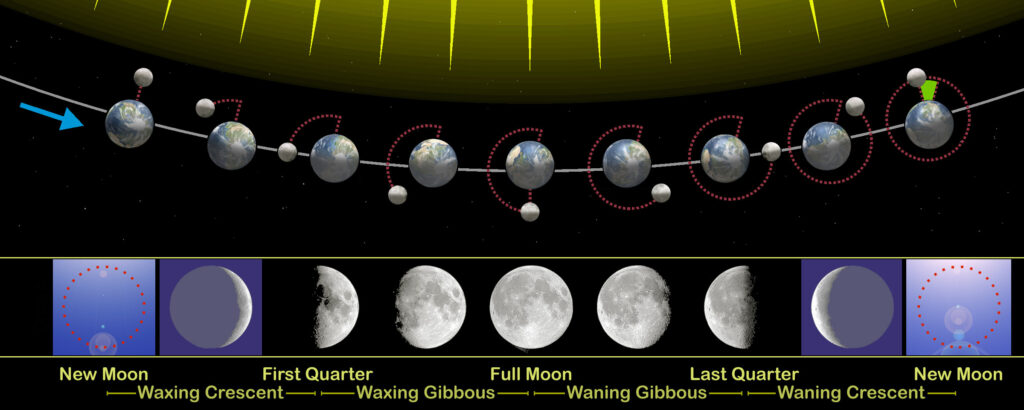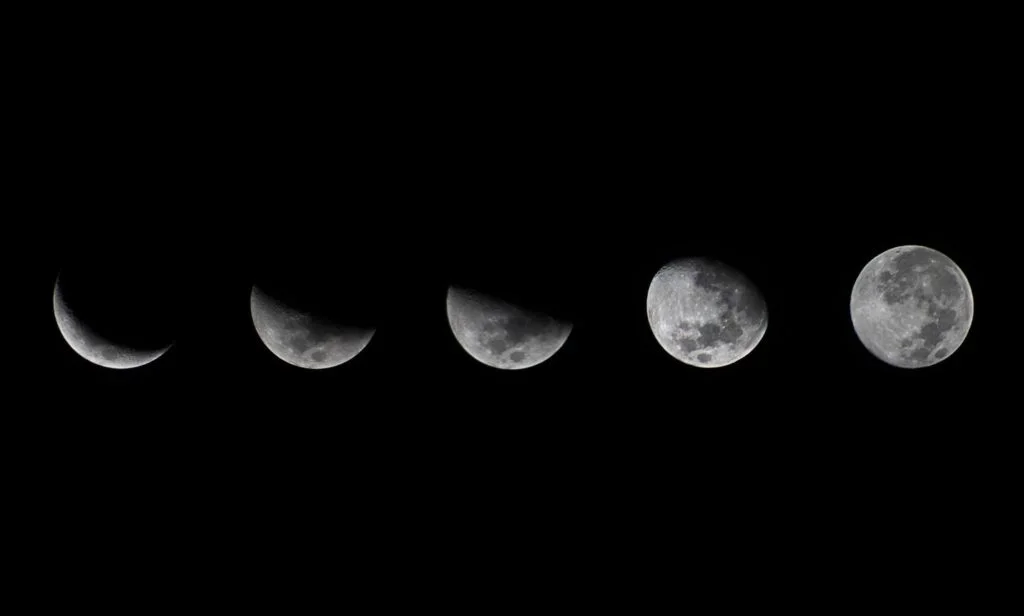The Moon is a familiar sight in the night sky, and we often observe it in different shapes and sizes. It is a natural satellite of the Earth and reflects sunlight, making it visible to us at night. The changing shape of the Moon is one of the most striking features that we can observe. In this article, we will explore the reasons behind the changing shape of the Moon.
The Lunar Cycle
The changing shape of the Moon is part of its natural cycle, which takes around 29.5 days to complete. This cycle is called the lunar cycle or the lunar month. During this cycle, the Moon appears to change shape because of the way it moves around the Earth and the way it reflects sunlight.
The Phases of the Moon

The changing shape of the Moon is known as its phases. There are eight major phases of the Moon, which are:
- New Moon: This is when the Moon is between the Earth and the Sun, and we cannot see it from Earth.
- Waxing Crescent: This is when the Moon is visible as a thin crescent in the western sky after sunset.
- First Quarter: This is when the Moon is half-illuminated, and it appears as a half-circle in the sky.
- Waxing Gibbous: This is when the Moon is more than half-illuminated, and it appears as a larger crescent in the sky.
- Full Moon: This is when the entire face of the Moon is illuminated by the Sun, and it appears as a bright circle in the sky.
- Waning Gibbous: This is when the Moon is less than fully illuminated, and it appears as a smaller crescent in the sky.
- Third Quarter: This is when the Moon is again half-illuminated, but this time it appears as a half-circle in the eastern sky before sunrise.
- Waning Crescent: This is when the Moon is visible as a thin crescent in the eastern sky before sunrise.
The Phases
The phases of the Moon are caused by the position of the Moon relative to the Sun and Earth. The Moon orbits the Earth, and as it does so, it appears to change shape because the Sun’s light is reflected off different parts of the Moon.
When the Moon is between the Sun and Earth, the side of the Moon facing the Earth is not illuminated, and we cannot see it. This is the new Moon phase. As the Moon moves in its orbit, we start to see a small crescent of the illuminated side. This is the waxing crescent phase.
As the Moon continues to orbit the Earth, more and more of its illuminated side becomes visible, and it appears to be getting larger. This is the waxing gibbous phase. When the Moon is directly opposite the Sun and fully illuminated, it is the full Moon phase.
After the full Moon, the Moon appears to shrink in size as it moves towards the third quarter phase. In this phase, the Moon is once again half-illuminated, but this time we see it as a half-circle in the eastern sky before sunrise. As the Moon continues to orbit the Earth, less and less of its illuminated side becomes visible, and it appears to be getting smaller. This is the waning gibbous phase.
Finally, the Moon appears as a thin crescent in the eastern sky before sunrise, and this is the waning crescent phase. As the Moon moves towards the new Moon phase, it disappears from view, and the cycle begins again.
The changing shape of the Moon is caused by the position of the Moon relative to the Sun and Earth.




